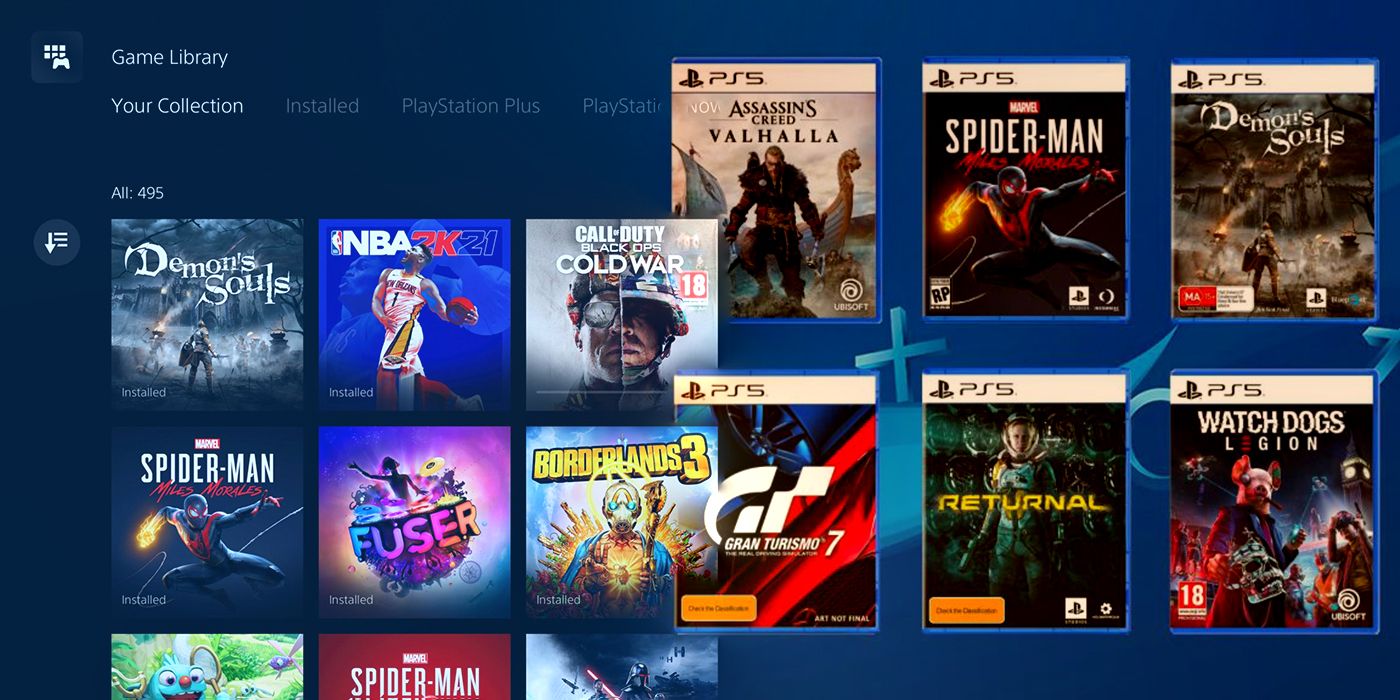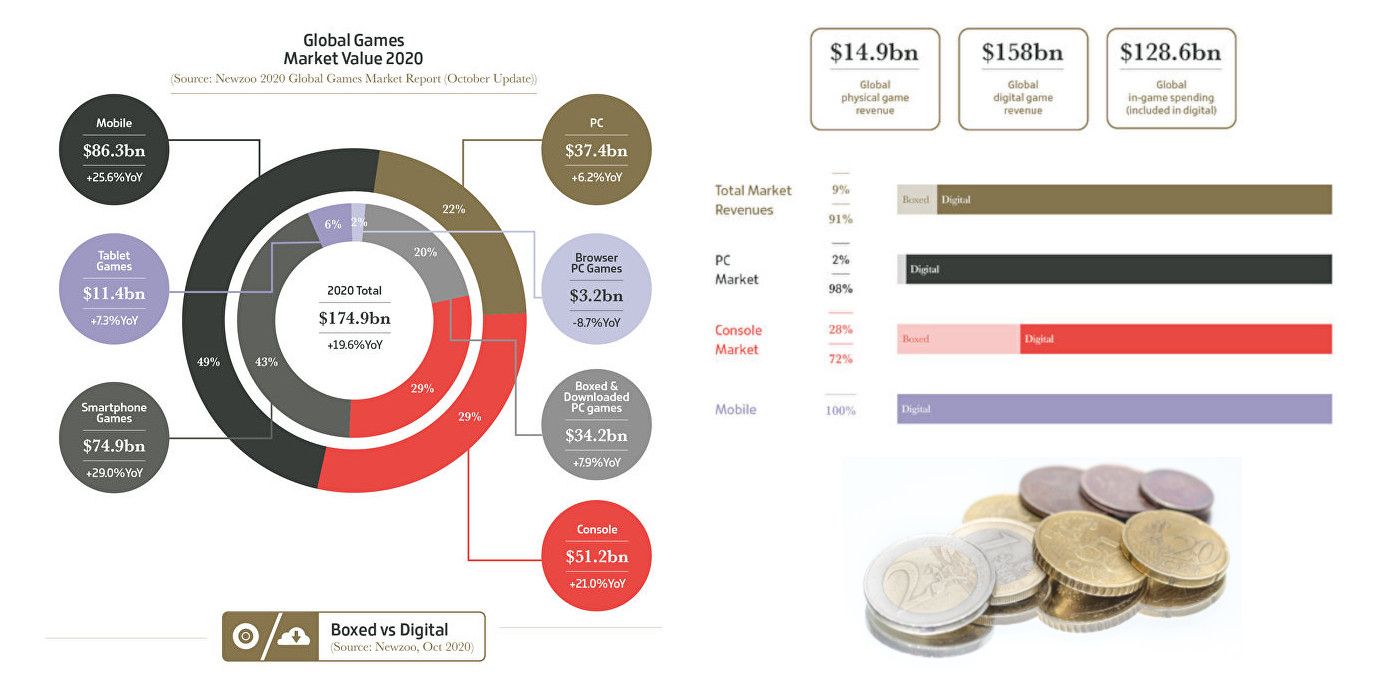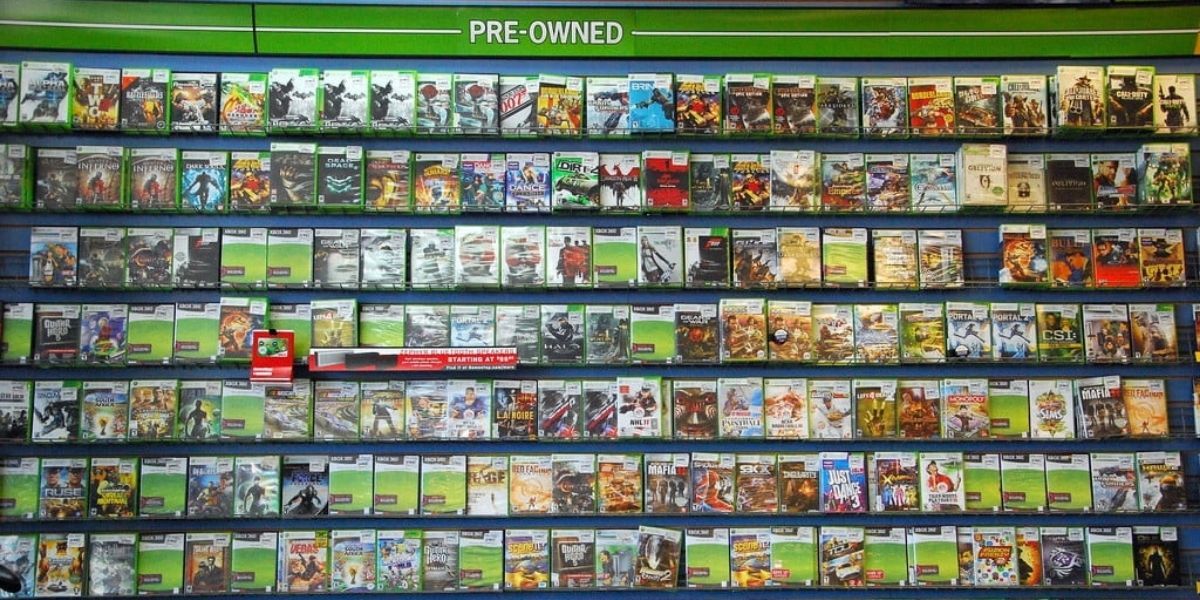The Future of Physical Media in Games | Game Rant

These days, it's become even more difficult to stop by a store, pick up a new game and just play. Obviously in 2020 it was basically impossible to do so for most of the year, thanks to the pandemic and sheltering-in-place. However, in general, things like day-one patches and updates make buying games digitally far more convenient for modern gaming. The one big drawback of buying everything digitally is there's no longer a tangible collection that players can amass (and even show off) if they want to. Some gaming platforms have straight up abandoned physical media altogether. Physical games have been on a downward trend, though not as bad as it's made out to be.
Just to clarify, this isn't a condemnation of any gaming enthusiasts who still prefer to play games via physical media instead of digitally. Some prefer the tactile feeling of opening up a brand new game and inserting the disc for the first time, regardless of day-one patches. However, analysts and pundits in the gaming industry have been banging the same drum that "physical media is dying" for a while. Even if the "digital-only" marketplace may eventually be an inevitability, the idea that physical games could disappear any time soon is a bit far-fetched. Physical sales have been trending downward steadily in the last decade, but physical games are by no means "dead."

Recently, a video game market report conducted by GamesIndustry.biz highlighted some interesting 2020 consumer trends in the video game industry. Other than video games accumulating almost $175 billion in revenue this year, the report also contained some interesting metrics on physical vs. digital media. Throughout the whole video game industry, 91 percent of total revenue from game sales in 2020 came from digital media. Just two percent of total PC revenue came from physical game purchases, while on console, physical media purchases only made up 28 percent of total revenue. $158 billion of total revenue in game sales was conducted through digital stores.
Obviously the huge caveat to these consumer trends would be this year's massive coronavirus lockdowns across the world. In many cases, and for many months, buying physical games was either dangerous or altogether impossible to do, so this number theoretically makes sense for 2020. However, the other big caveat is that these splits do not make it clear whether or not DLC or in-game purchases factored into these percentages. Just as an example, Nintendo's first quarter of its 2021 fiscal year (April-June 2020) was the first time in the company's history that Nintendo ever sold more digital games than physical, accounting for 55.6 percent of its revenue in Q1.

Granted that is just one company's example compared to the entire industry's physical vs. digital split, but it does help indicate that the sliding trend of physical media overall is not increasing any faster than it was previously. Nintendo's Switch platform is singled out here because it's the most conducive console platform for primarily purchasing games digitally, thanks to its easily expandable storage capacity. However, the preferential split between digital and physical media on Switch, during the height of the pandemic around the world, was only about a 55-45 split. For reference, 51 percent of Sony's game sales on PlayStation in the 2020 fiscal year were digital.
All in all, preference of digital sales over physical media may have been exacerbated this year due to the circumstances, but the trend is not that drastically changed compared to previous years. Steady decline in physical games has been an often talked about trend, and while Covid-19 restrictions may have spiked digital sales in 2020, physical media still has a nominal presence on most gaming platforms.
PC and mobile are the only gaming platforms excluded here. The digital storefront infrastructure on PC with Steam, Epic Games Store, and even recent examples like Xbox Game Pass for PC have effectively invalidated the effectiveness of physical media. Not to mention PCs with disc drives are becoming exceedingly rare. For mobile technology, smartphones and tablets are designed for convenience and portability, so there never was much physical media to begin with.

So long as console makers continue to support physical-based media, physical games will always exist in some fashion. Brick-and-mortar franchises like GameStop may not necessarily be long for this world, but so long as physical media is available, fans who prefer physical collections will always stick with physical games. Considering the next-gen PS5 and Xbox Series X consoles both have disc drives, physical games will still be around at least another decade. It's arguable whether or not there are enough players who prefer the convenience factor of digital games over traditional physical media. The onus really is on console makers to support physical media's existence.
Of course, the gaming enthusiasts who buy physical games will have an indelible impact on the format's support as well. Regardless, at least in the near-future, physical games aren't going away any time soon. Even in 2020, when average internet speeds and storage sizes rise, there will always be fans who want that disc and case. A decade from now, this balance may shift strictly to digital gaming only, but it's hard to say for certain that will even happen if players still prefer to buy their games physically.

Post a Comment